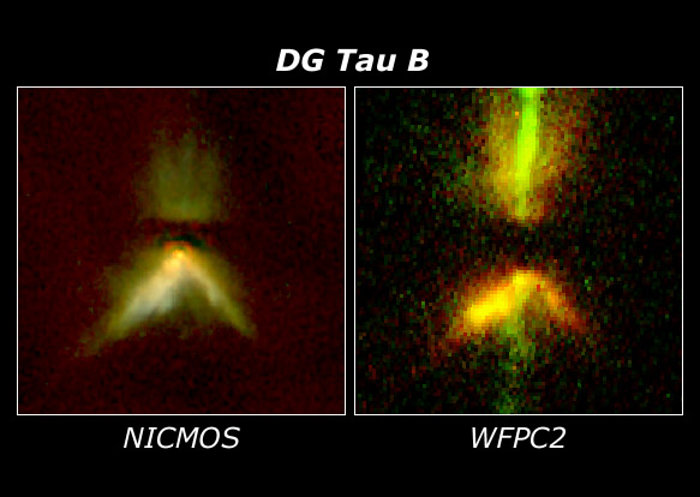DG Tau B
An excellent example of the complementary nature of Hubble's instruments may be found by comparing the infrared NICMOS image of DG Tau B to the visible-light Wide Field and Planetary Camera 2 (WFPC2) image of the same object. WFPC2 highlights the jet emerging from the system, while NICMOS penetrates some of the dust near the star to more clearly outline the 50 billion-mile-long dust lane (the horizontal dark band, which indicates the presence of a large disk forming around the infant star). The young star itself appears as the bright red spot at the corner of the V-shaped nebula.
Credit:D. Padgett (IPAC/Caltech), W. Brandner (IPAC), K. Stapelfeldt (JPL)
About the Image
About the Object
| Name: | DG Tau B |
| Type: | Milky Way : Star : Evolutionary Stage : Young Stellar Object Milky Way : Star : Circumstellar Material : Disk |
| Distance: | 450 light years |
| Category: | Stars |
Colours & filters
| Band | Wavelength | Telescope |
|---|---|---|
| Infrared J | 1.1 μm |
Hubble Space Telescope
NICMOS |
| Optical H | 1.6 μm |
Hubble Space Telescope
NICMOS |
| Infrared K | 2.05 μm |
Hubble Space Telescope
NICMOS |
|
Hubble Space Telescope
WFPC2 |
